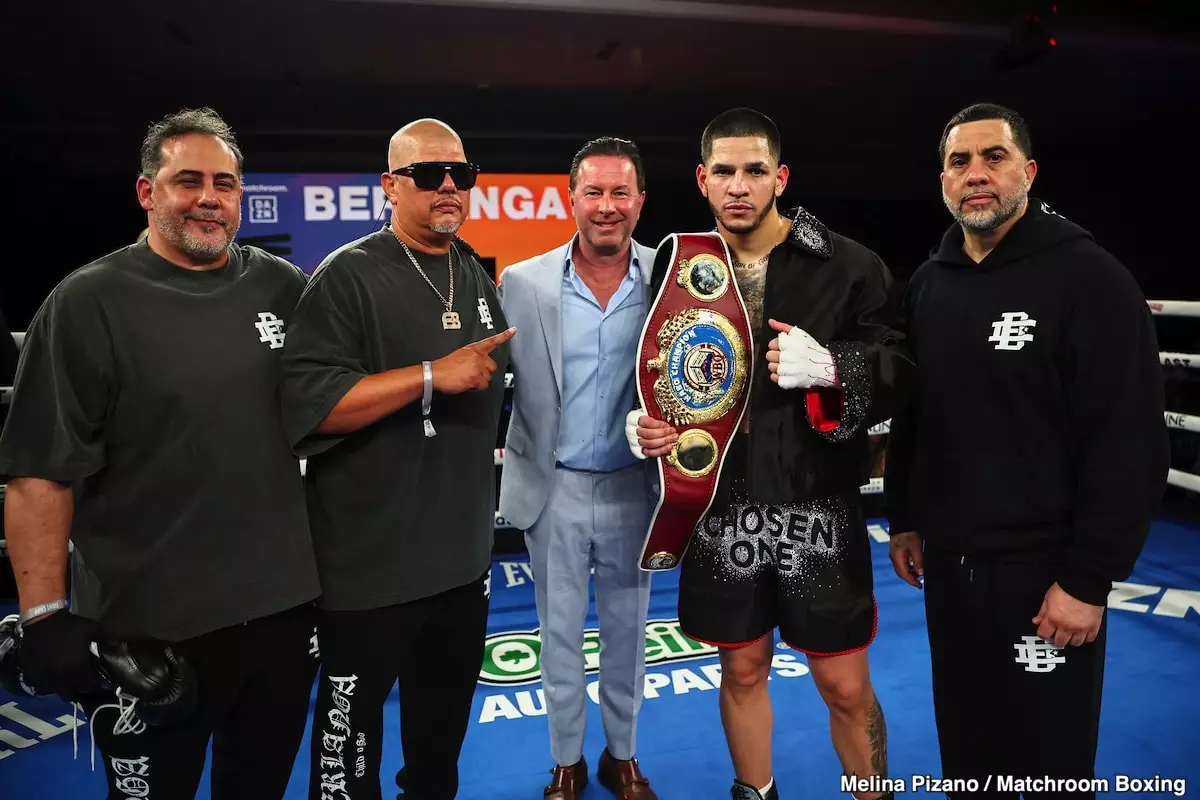In a striking twist to the boxing calendar, Ring Magazine has revealed that the July 12th fight night in New York City will showcase a unique dual-feature format. Edgar Berlanga is set to face Hamzah Sheeraz while Shakur Stevenson will take on William Zepeda. Here’s the conundrum: although the fight week activities will crown Stevenson-Zepeda as the main event, the storyline flips on the night of the bout, designating the Berlanga-Sheeraz clash as the show-closer. This dichotomy is an audacious move, yet one that may lead to considerable confusion among boxing enthusiasts.
Marketing Over Substance
At the heart of this arrangement lies an unsettling truth; neither Berlanga (23-1, 18 KOs) nor Sheeraz (21-0-1, 17 KOs) has solidified their reputations through noteworthy victories. They are often viewed as products of clever marketing rather than true boxing contenders who have earned their stripes. The prospect of either fighter headlining a card over a more elite matchup can be unsettling for purists who prize talent and achievement in the ring. The choice to elevate their bout to main event status could, in fact, be perceived as an affront to the sport’s integrity.
For many fans, the intrigue of the Stevenson-Zepeda matchup is undeniable. Stevenson has shown brilliance in the ring, carrying the torch of future boxing legends, while Zepeda’s relentless style captivates audiences. Presenting these two highly skilled boxers as co-main events while relegating them to a secondary status under Berlanga and Sheeraz draws into question whether the sport is prioritizing promotional tactics over the sporting spectacle itself.
Targeting the PPV Consumer
From a promotional standpoint, designating the Stevenson-Zepeda bout as the main event during the lead-up to the fight could be a calculated strategy to entice pay-per-view consumers. It’s likely the hope is to draw in fans by creating buzz around an event that features two combatants with much more pedigree and marketability than their counterparts. The reality is that if this cleverness is about misleading fans into purchasing an event, it raises ethical queries around the transparency of such promotional approaches.
Moreover, the preference of American audiences for established fighters could make the Berlanga-Sheeraz fight feel like an obligation rather than a thrilling headlining event. Consumers tend to gravitate toward bouts that promise excitement, skill, and unpredictability. Drawing power might be skewed heavily in favor of the Stevenson-Zepeda affair due to their respective reputations.
Fans Left in the Dark
This convoluted arrangement could create a rift between fight promoters and the loyal fanbase that thrives on authenticity. Fans are savvy, and the perception of being manipulated can lead to disillusionment with the sport. Many casual viewers will find themselves questioning why Berlanga and Sheeraz have been handed higher billing despite the significantly lower stakes involved in their matchup.
While innovation in fight promotions is valuable, it becomes detrimental when it undermines the very foundations of the sport. Boxing should celebrate skilled fighters seeking glory, rather than promoting a narrative that may ultimately leave fans feeling cheated or confused. Only time will tell if this unusual format will result in greater viewership or if it will backfire, leaving boxing aficionados yearning for the integrity that has long defined the sport.


Leave a Reply